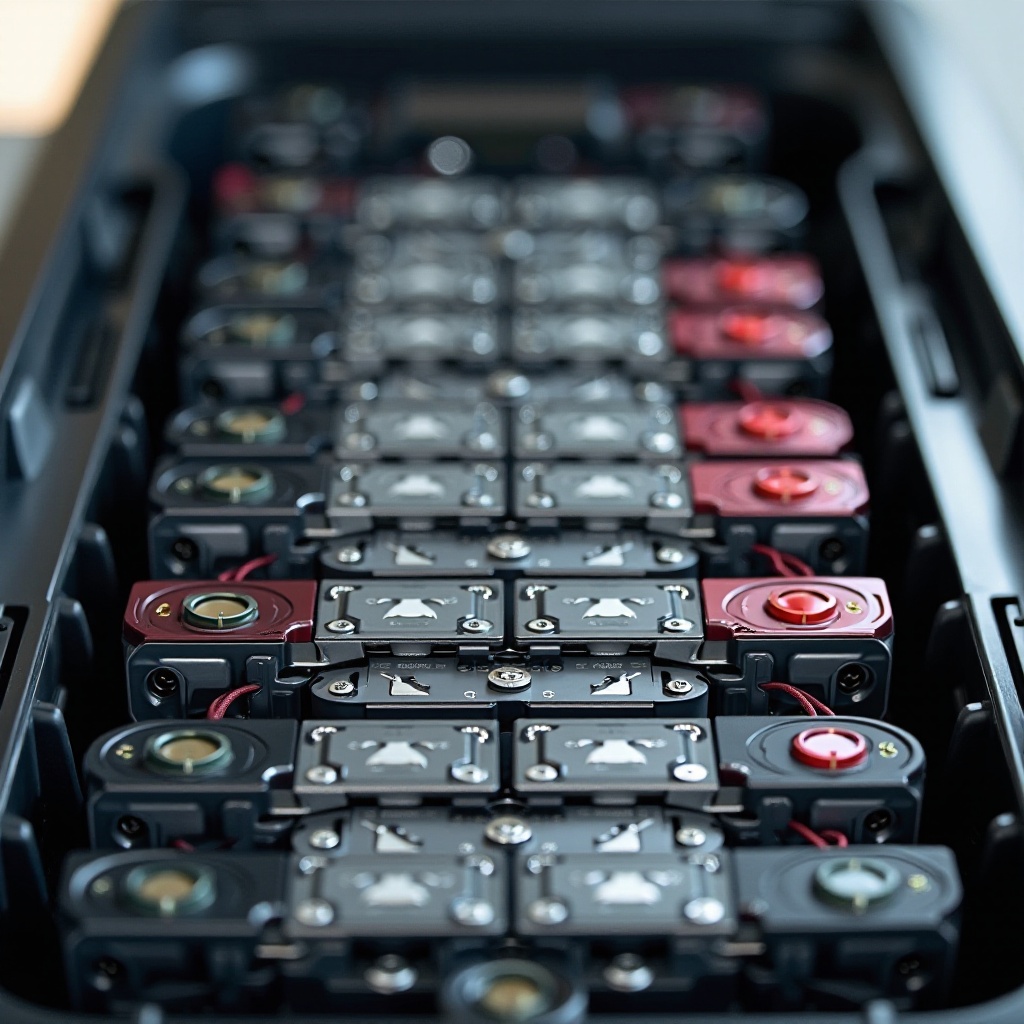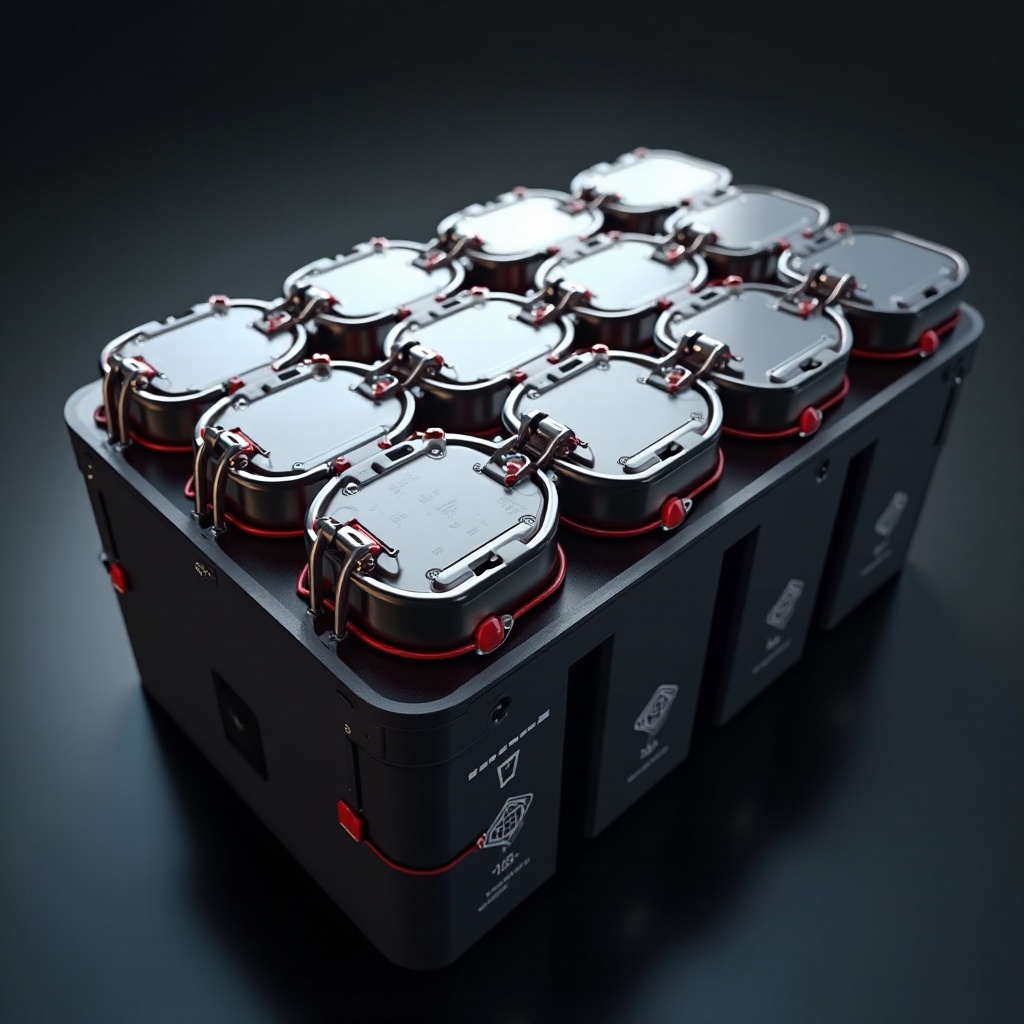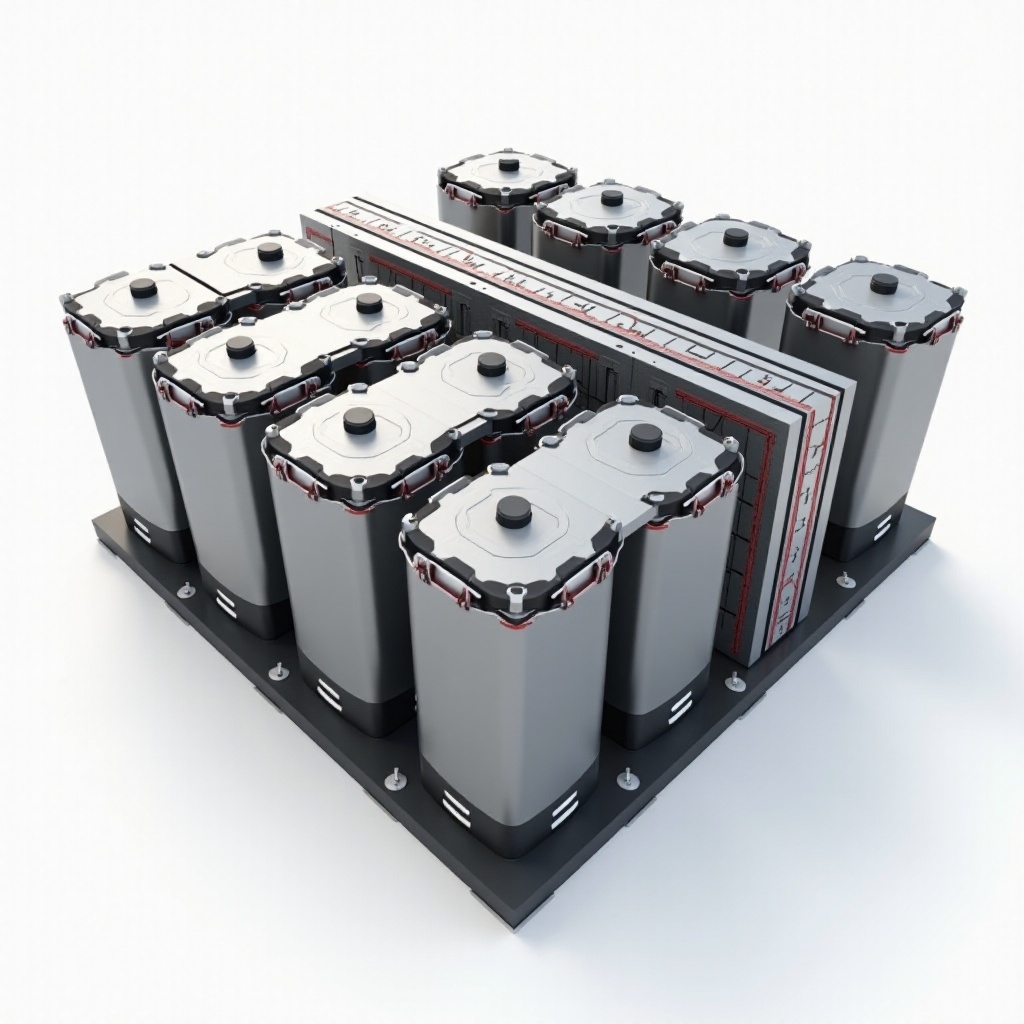Introduction
Tesla’s innovative battery technology sets it apart in the electric vehicle (EV) market. The design of Tesla battery packs involves series and parallel configurations to maximize efficiency, range, and performance. In this article, we’ll explore the fundamental concepts of these configurations, Tesla’s hybrid approach, the advantages and challenges they bring, and what’s in store for the future of Tesla battery technology.

The Basics of Battery Pack Design
A fundamental understanding of battery packs begins with the two essential electrical configurations: series and parallel. The design influences the voltage, current, capacity, and overall performance of the battery pack.
-
Series Configuration: Connecting cells end-to-end increases the total voltage. The current remains constant, but each additional cell adds up to the total voltage output.
-
Parallel Configuration: Connecting cells side-by-side increases the capacity and current. The total voltage remains the same as one cell, but the current capabilities and storage capacity increase with each added parallel cell.
Understanding these configurations is crucial for grasping how Tesla optimizes their battery packs.

Series Configuration in Tesla Battery Packs
To explore series configurations, consider the following:
-
Voltage Increase: Tesla strings multiple battery cells in series to achieve the high voltage required by their motors. For example, if each cell provides 3.7 volts, connecting 96 cells in series results in a 355.2-volt battery.
-
Ensuring Balance: Each cell’s voltage needs to be balanced precisely. Tesla employs sophisticated Battery Management Systems (BMS) to ensure individual cells within a series maintain equal voltage levels to avoid overcharging or deep discharges.
This configuration is vital for achieving the necessary voltage to propel Tesla’s advanced electric vehicles.
Parallel Configuration in Tesla Battery Packs
Parallel configurations in Tesla’s battery packs offer several significant advantages:
-
Enhanced Capacity: When cells are wired in parallel, the battery pack’s capacity increases. For instance, three 1000mAh cells connected in parallel will yield a total capacity of 3000mAh without a change in voltage.
-
Stable Performance: Parallel connections enhance the stability of battery performance. In Tesla cars, this means longer travel distances on a single charge. If one cell fails, parallel configurations help to prevent significant power loss.
This versatility is critical for sustaining high current draws required during acceleration and ensuring driver reliability.
Tesla’s Hybrid Approach to Battery Pack Configuration
Bridging the concepts of series and parallel configurations, Tesla’s real strength lies in a hybrid approach which further enhances efficiency and performance:
-
Modular Battery Packs: Tesla designs modular battery packs that incorporate both series and parallel connections. Individual modules (comprising several cells) are connected in series to achieve desired voltage, while cells within each module are connected in parallel to increase capacity.
-
Enhanced Efficiency and Redundancy: This hybrid approach balances high voltage and high capacity, setting Tesla apart in creating powerful, long-lasting battery packs. The redundancy achieved through parallel connections ensures that even if some cells fail, the vehicle continues to perform efficiently.
-
Thermal Management: Effective thermal management in series-parallel configurations helps maintain optimal battery temperatures. This is crucial for performance and lifespan, as overheated cells can lead to thermal runaway events.
Understanding Tesla’s hybrid configuration approach reveals the genius behind its long-range and high-performance electric vehicles.
Benefits and Challenges of Series-Parallel Configuration
Benefits:
-
Optimized Performance: Combining series and parallel configurations results in optimized voltage and capacity, enhancing overall vehicle performance.
-
Increased Range: The increased capacity allows for longer ranges between charges, a significant selling point for Tesla vehicles.
-
Enhanced Safety: The modular design includes inherent redundancies, ensuring safety and reliability even when individual cells or modules fail.
Challenges:
-
Complexity: Designing and maintaining series-parallel configurations require sophisticated engineering and an advanced battery management system (BMS) to manage charge and discharge cycles.
-
Cooling Systems: The need for effective thermal management systems can complicate design and add cost. Managing heat generation is crucial to avoid overheating.
-
Weight and Space: The addition of more cells, cooling systems, and management infrastructure can increase the overall weight and space requirements, impacting the design dynamics of the vehicle.
By acknowledging these benefits and challenges, you can see how Tesla engineers navigate a delicate balance to deliver superior battery technology.

The Future of Tesla Battery Technology
With rapid advancements in battery technology, Tesla continues to innovate:
-
New Battery Chemistries: The advent of lithium iron phosphate (LFP) and solid-state batteries promises higher energy densities, lower costs, and improved safety over conventional lithium-ion batteries.
-
Increased Production Efficiency: Giga-factories and advanced automation aim to bring down production costs and meet the growing demand for EVs.
-
Sustainability Initiatives: Tesla focuses on recycling and sustainable mining practices to ensure long-term environmental impact is minimized.
The continuous evolution of these technologies will significantly influence the electric vehicle market and Tesla’s position within it.
Conclusion
In conclusion, Tesla’s pioneering series and parallel battery configurations have set new standards for electric vehicles. Their hybrid design ensures optimized performance, safety, and efficiency, propelling Tesla to the forefront of the electric vehicle revolution. With ongoing advancements, Tesla remains committed to pushing technological boundaries, ensuring a sustainable and electrifying future.
Frequently Asked Questions
What is the advantage of using both series and parallel configurations in Tesla battery packs?
Using both series and parallel configurations allows Tesla to optimize voltage and capacity, improving vehicle performance and range while ensuring safety through redundancy.
How do Tesla’s battery configurations impact the overall performance of their vehicles?
The hybrid configurations enhance performance by providing the necessary voltage for powerful acceleration and the capacity for extended travel ranges, all while maintaining system stability.
What future advancements can we expect in Tesla’s battery technology?
Expect advancements in battery chemistries like solid-state batteries, production efficiency improvements through giga-factories, and sustainability initiatives that include enhanced recycling processes and greener supply chains.


